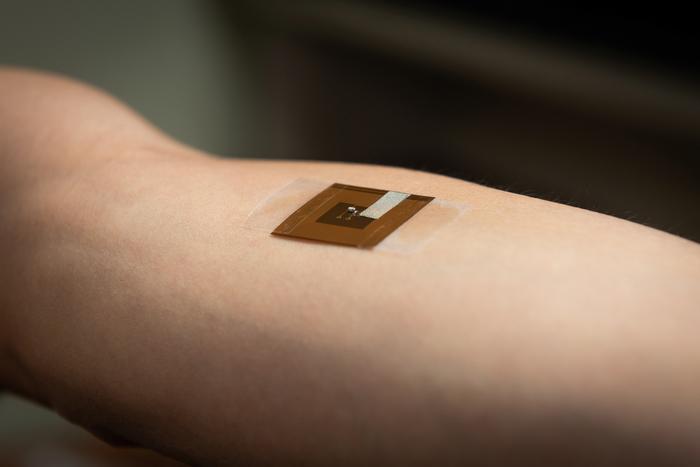A new battery-free wearable patch that measures the bioimpedance of skin lesions may help detect skin cancer earlier and more accurately, finds research in npj Biomedical Innovations.
Bioimpedance indicates how easily electrical signals pass through living tissue. Cancerous areas often have different electrical properties than healthy skin. By measuring bioimpedance, the patch can help identify abnormal areas that may require further medical evaluation.
Mohammad J. Moghimi, PhD, Assistant Professor of Biomedical Engineering at Wake Forest University School of Medicine in Wake Forest, NC, and his team designed a flexible, chip-less, battery-free patch that is placed directly on the skin and works wirelessly with a small reader device.
To test its effectiveness, the team recruited 10 volunteers. Each participant had the patch placed on both a pigmented skin lesion and nearby healthy skin. The patch used safe electrical signals to measure bioimpedance. Standard statistical methods confirmed significant differences between healthy and abnormal skin.
The patch could clearly distinguish between healthy skin and spots that might be a concern, picking up unique electrical signals from suspicious moles or lesions regardless of skin tone.
“Skin cancer is most treatable when caught early, but many people don’t have easy access to specialized dermatology care,” says Moghimi, in a news release. “Our wearable patch is designed to be affordable, comfortable, and easy to use, even outside of a doctor’s office. It could empower patients and primary care providers to monitor suspicious skin lesions and seek help sooner.”
According to Moghimi, the patch is unique because it does not require batteries or chips, making it lightweight, disposable, and cost-effective. Unlike visual inspection, the patch provides objective, numerical data about the skin’s health, reducing the risk of unnecessary biopsies and helping clinicians make more informed decisions.
“Our goal is to make early skin cancer detection accessible to everyone,” says Moghimi. “By providing a tool that can be used at home or in primary care settings, we hope to reduce the number of missed or late diagnoses and improve patient outcomes.”
The research team plans to further improve the patch by integrating conductive hydrogel electrodes for even better performance and comfort. The next phase will involve larger clinical studies to test the patch’s effectiveness in real-world settings and to determine how well it can distinguish between benign and malignant lesions.


